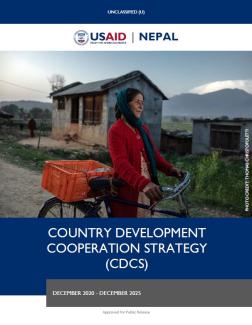The goal of the USAID/Nepal’s 2020 – 2025 Country Development Cooperation Strategy (CDCS) is: A more self-reliant, prosperous, and inclusive Nepal that delivers improved democratic governance and health and education outcomes. The next five years are crucial for Nepal, not just to recover from COVID-19 and continue its previous development trajectory, but also to make the gains needed to attain its own goal of reaching middle income country status by 2030. To achieve this progress, Nepal must tap deeper into its own productive resources, implement policies that attract investment, and more aggressively engage the private sector in higher growth and more productive economic sectors, all the while building connectivity within the Indo-Pacific region. It also needs to ensure that its federal experiment is successful by giving voice, power, and authority to all of its diverse population.
To further the U.S. priorities in Nepal, USAID/Nepal identified four development objectives (DOs) through which it will obtain the development goal:
DO 1: More Effective, Participatory, and Equitable Democratic Ecosystem
DO 2: Broad-Based and Inclusive Economic Growth Fostered
DO 3: Inclusive Health and Education Systems Strengthened
DO 4: More Equitable and Improved Natural Resources and Disaster Risk
In making strategic choices for this CDCS, USAID/Nepal is guided by lessons learned from the previous strategy, country assessments, and the Government of Nepal’s development policy and direction. During the development of the CDCS, three themes - federalism, inclusion, and resilience - repeatedly emerged as crucial and necessary approaches to realize Nepal’s development vision. USAID has woven these three strategic approaches throughout the CDCS across development objectives to ensure that USAID’s programmatic response adequately accounts for and integrates these factors that are crucial to successfully addressing Nepal’s development challenges.

